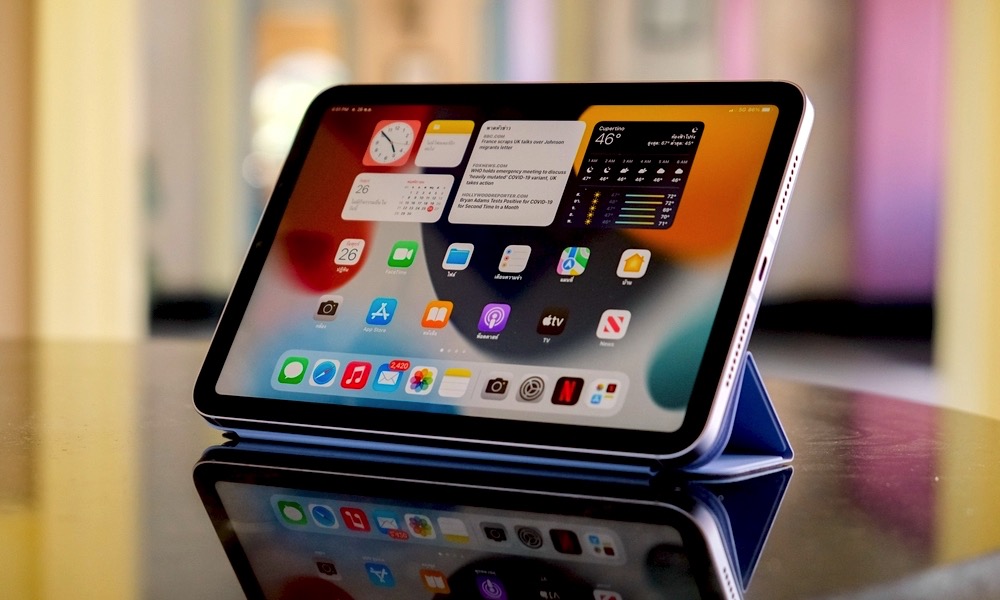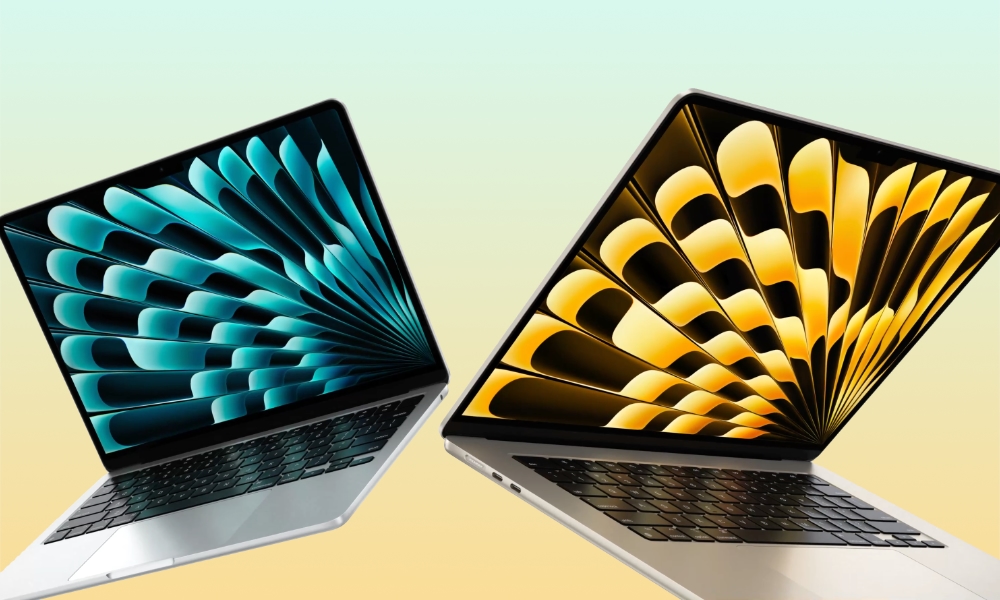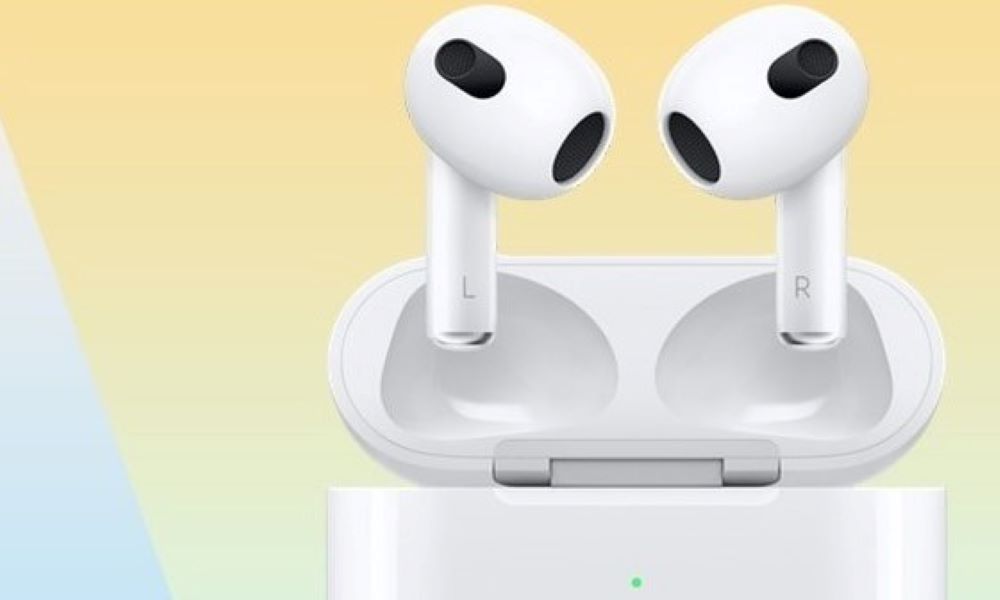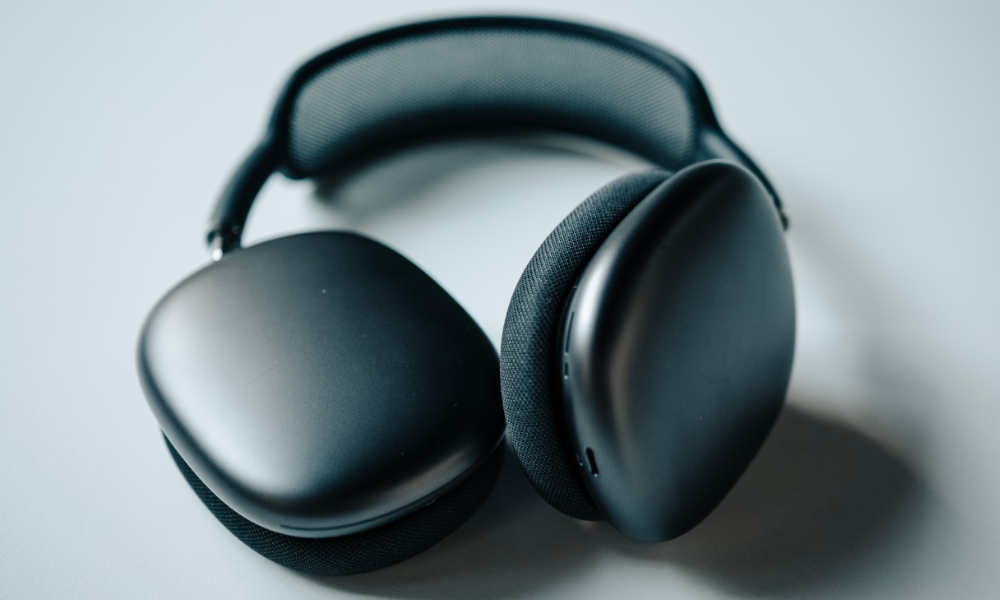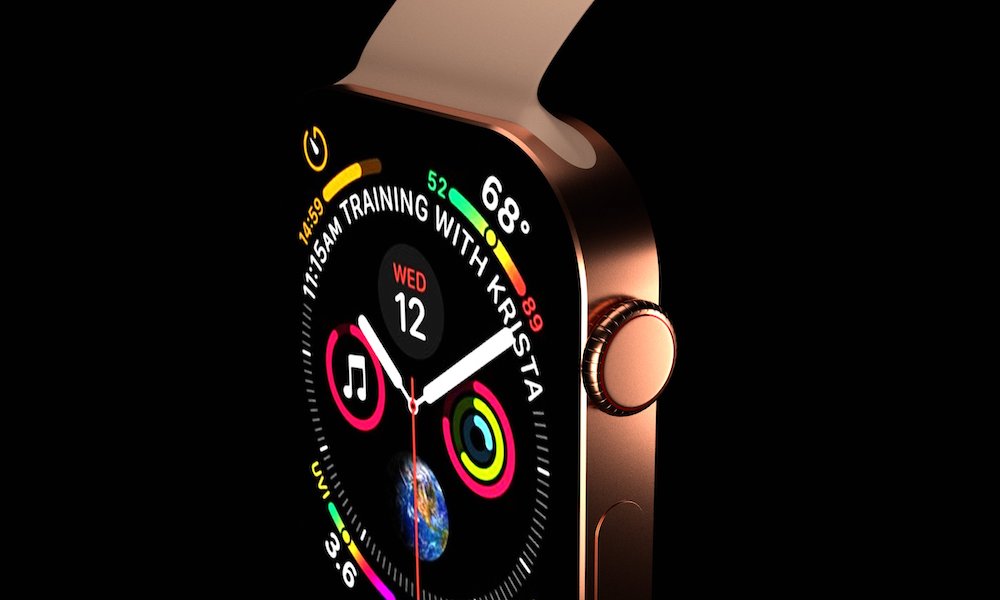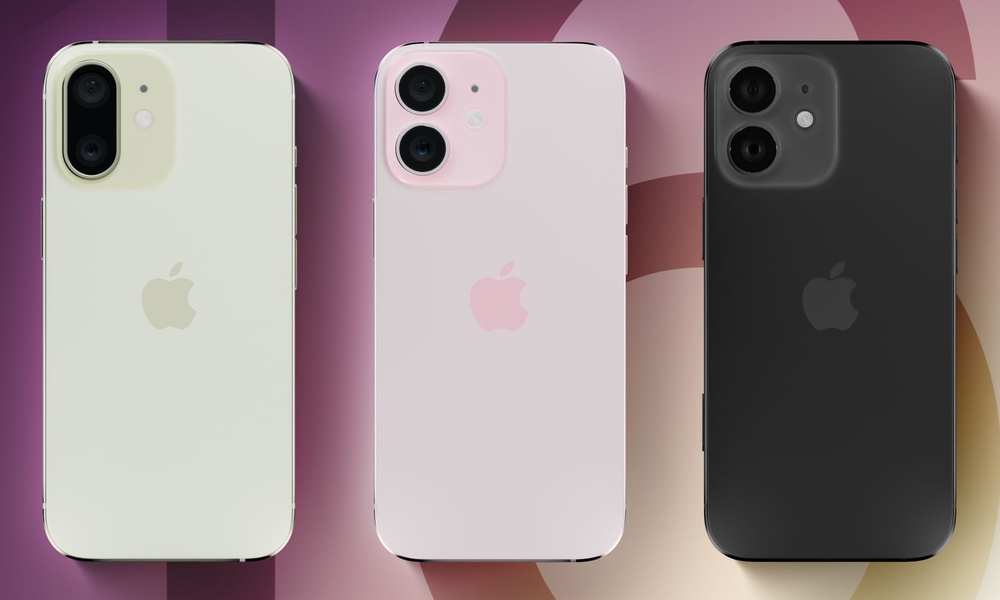Everything We’re Expecting from Apple in 2024
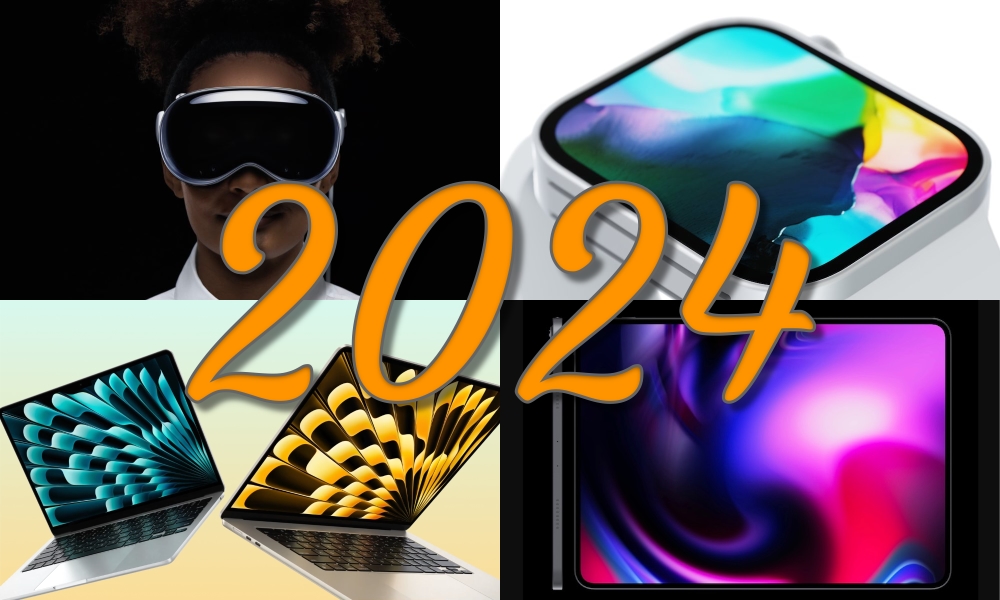
Happy New Year from all of us here at iDrop News! Although 2023 has been an exciting year for Apple products, there were still some odd gaps in the company’s lineup last year. However, that means that 2024 will be even more thrilling as Apple makes up for lost time with everything from new AirPods and iPads to the long-awaited Vision Pro.
The two most significant high points of 2023 were the unveiling of the Apple Vision Pro and an iPhone 15 lineup that (finally) made the switch to USB-C. That was far from all that showed up, though; we also saw the completion of the Apple silicon transition with the M2 Ultra-powered Mac Pro, plus a new M2 MacBook Air in a larger 15-inch design, and an Apple Watch lineup that made the largest performance leap in years.
However, the iPad was conspicuously missing in action last year, making 2023 the first year since the iPad debuted in 2010 that Apple didn’t release any new iPads. Along similar lines, Apple offered up only a single AirPods update — a minimal refresh to the AirPods Pro that mostly just swapped the Lightning case for a USB-C version.
The good news is that Apple may have had its hands full last year with the Vision Pro and the titanium iPhone 15 Pro Max with its tetraprism lens, but the company hasn’t been standing still. This year will bring an abundance of compelling new Apple products — and we could see the first of them show up by the end of this month.
Read on for 9 exciting new products we expect to see from Apple in 2024.
The Apple Vision Pro

The first and most significant release of 2024 will likely be on shelves by early February. Of course, with its $3,500 price tag, Apple’s Vision Pro won’t be for everyone, but seeing it make the transition from demos to reality is still going to be exciting to watch.
At the very least, you should be able to step into an Apple Store and try one on — something that’s been virtually impossible so far unless you’re one of Apple’s selected developers. Once those floodgates are open, we’ll also see what kind of apps have been crafted for the Vision Pro, which should give us a sense of where future models will fit into our lives.
After all, there’s every reason to believe Apple will release a more affordable version of the Vision Pro someday. It’s doubtful that will happen this year — most analysts are predicting late 2025 at the soonest — but Apple’s goal is to make its new spatial computing platform available to as many people as possible, and it’s already looking for ways to do so.
A New 12.9-inch iPad Air
As we mentioned earlier, 2023 was the year the iPad forgot. However, that just means Apple has a lot to make up for in 2024. There’s a good chance we’ll see the entire lineup refreshed, but the most significant new entry is expected to be a larger 12.9-inch iPad Air.
This will allow folks who want a more expansive iPad canvas to get there without shelling out big bucks for the top-of-the-line iPad Pro. The 12.9-inch iPad Air is expected to use the same Liquid Retina LCD technology found in today’s iPad Air models and lack some of the iPad Pro’s other bells and whistles like the True Depth cameras for Face ID and the 120Hz ProMotion display.
Most reports suggest we’ll see this in March, alongside a new standard-sized iPad Air, with both models likely packing in Apple’s M2 chip.
An OLED iPad Pro
Apple introduced OLED screens to the iPhone over six years ago with the debut of the iPhone X, and since the iPhone 12 lineup, it’s become the standard for every model except the budget iPhone SE. However, the iPads have been left out of the party.
The 12.9-inch iPad Pro instead gained a mini-LED Super Retina XDR display in 2021, but the 11-inch iPad Pro remained behind on the standard Liquid Retina LCD that it had since 2018.
Thankfully, 2024 is expected to be the year that Apple’s tablets embrace OLED, naturally starting with the flagship iPad Pro models. The 2024 iPads Pro, which are also expected to feature Apple’s latest M3 silicon, will be brought back into harmony for the first time in three years since they’ll both get the new OLED screens.
The new screens will feature the same 120Hz ProMotion capabilities that have been standard since the first 12.9-inch iPad Pro debuted in 2015, matching the display technology used in Apple’s latest iPhone 15 Pro lineup. Despite the current iPad Pro lineup being only a little over a year old, rumor has it that Apple plans to unveil these new M3 iPads Pro in March alongside the expanded iPad Air family.
The ‘iPad mini 7’ and 11th-Gen iPad
The 2024 iPad lineup will be rounded out by a seventh-generation iPad mini and a refreshed 11th-generation standard iPad. However, these updates are expected to be considerably more modest.
It appears the ‘iPad mini 7’ will be little more than a spec bump, replacing the current model’s A15 chip with either an A16 or an M1 or M2. Where that ends up is anybody’s guess at this point. Still, it’s important to remember that the iPad mini is priced in the same middle tier as the iPad Air, and when it made its comeback in 2019, it had specs identical to the iPad Air in every way but size.
If anything, the entry-level iPad was the most unusual omission last year. Although Apple’s standard iPad models took a 3-5 year hiatus while it focused on the iPad Pro (depending on whether you count the first two iPad Air generations as part of the same family), it’s been consistently releasing new models of its most affordable tablet annually since 2017.
That culminated with the 10th-generation iPad in 2022, a significantly redesigned version that moved the camera to the side (for use in landscape orientation) and slid into an awkward new higher price point that put it somewhere between the older 9th-gen iPad and the iPad Air.
As a result, Apple kept selling that older 2021 model, and today, it remains the last Lightning-equipped iPad on the market. That’s likely to change this year when the 11th-Gen iPad comes out, although it’s unclear whether Apple will drop the price of the current 2022 model or find a way to sell the new one at a lower price. Don’t expect significant changes, though, as the entry-level iPad has never been a trailblazer.
M3 MacBook Air
Last fall, Apple unveiled a new lineup of M3 MacBook Pro models during its Scary Fast event – an unusual October evening session that also saw the refresh of the 24-inch iMac with M3 silicon and the elimination of the oddball 13-inch MacBook Pro form factor in favor of a more affordable 14-inch MacBook Pro featuring the base M3 chip.
That release brought a nice unity to the MacBook Pro family, but the MacBook Air was nowhere to be seen. Considering that Apple had just released the 15-inch M2 MacBook Air only four months earlier, the company probably felt it was too soon to bring the M3 chip to that product lineup since it would have been awkward to update the 15-inch model so soon or leave it behind the 13-inch models.
Instead, rumor has it that we’ll see the entire MacBook Air lineup get M3 silicon in March. As with the 24-inch iMac, we probably won’t see any other significant changes, especially since Apple already did a big design refresh with the M2 series in mid-2022.
Two New ‘AirPods 4’ Models
Some folks expected Apple to release new fourth-generation AirPods alongside the iPhone 15 during its September 2023 event. After all, the AirPods 3 came out in 2021, and Apple was about to shift its entire world over to USB-C.
The last time we had such a quiet year for AirPods was in 2018, when the original AirPods were still roaming the earth. In 2019, Apple brought us the second-generation AirPods and original AirPods Pro, and while 2020 was a bit less eventful, the AirPods Max did show up in December.
So, it was a surprise when only the AirPods Pro gained a USB-C case, and the rest of Apple’s AirPods were left behind on Lightning. Some of that may be a matter of Apple’s plate being full right now — even its Mac accessories haven’t made the switch to USB-C yet — but it’s also because Apple has something more in store for the ‘AirPods 4.’
If recent reports are accurate, Apple plans to release two new versions of the standard AirPods this year. Rather than keeping older AirPods on the market, Apple will release a “lite” set of AirPods that are effectively a direct upgrade to the current AirPods 3 for budget-conscious users, plus a more expensive version that will include active noise cancellation (ANC). The two new models will feature the same physical design, but it’s not yet clear how Apple will brand them.
New AirPods Max
There’s been some debate on whether Apple’s AirPods Max have been much of a success. Released in late 2020, Apple’s premium cans were arguably overpriced even at launch. Now, they’ve just passed their third anniversary and they’ve been eclipsed by the Beats Studio Pro, which offer many of the same Apple-exclusive features like dynamic head tracking and Personalized Spatial Audio at a substantially lower price.
Nevertheless, while the AirPods Max may not be a huge priority for Apple, there’s clearly a niche that Apple wants to serve with these high-end headphones. By all reports, it plans to refresh them this year with a USB-C port and some new color options.
Don’t expect any other significant updates, though; the USB-C port will hopefully support wired lossless digital audio, and they’ll likely pack in Apple’s latest H2 chips that could bring new software features like Conversational Awareness and Adaptive Audio over from the AirPods Pro. However, despite Apple’s hard work pushing beyond Bluetooth, we haven’t heard any recent developments on new wireless codecs that could deliver lossless audio.
The ‘Apple Watch X’
This year will (arguably) mark the tenth anniversary of the Apple Watch, and some reports suggest Apple will use the opportunity to do something special with its wearable, changing things up in a big way.
Technically, Apple unveiled the Apple Watch in September 2014, but it didn’t go on sale until April 2015. Hence, the “anniversary” may be a year off, but seeing as we’re due for a “Series 10,” it would be as good a time as any to change things up.
This could lead to a rebranding as the Apple Watch X, following in the footsteps of the tenth-anniversary iPhone X in 2017, although that name remains entirely speculative for now.
Naming aside, this year’s Apple Watch is expected to get a redesign that could include a new band attachment system along with sensors and algorithms for hypertension and sleep apnea. Accurate blood pressure monitoring has been a non-starter, so Apple’s engineers have instead been working on measuring relative blood pressure, much like they did with the temperature sensor on the Apple Watch Series 8. This would at least be able to let you know when something is off, and you may want to see a doctor.
Sadly, depending on how things go with recent disputes between Apple and other health technology companies, this year’s Apple Watch could end up losing the blood oxygen sensor or even the ECG unless it can find a way to convince the courts that those features don’t infringe on any patents.
The iPhone 16 Lineup
Last but certainly not least is Apple’s new iPhone 16 lineup. Even though the company may have skipped a few other products last year, the iPhone is the one that always arrives almost like clockwork. Even the global COVID-19 pandemic couldn’t stop it — it merely delayed the iPhone 12 release into October 2020 rather than the usual September debut.
That’s not surprising, as the iPhone is Apple’s bread and butter, still accounting for half of the company’s annual revenue. It’s the one product the company can’t afford to skip on — or skimp on — and this year’s iPhone 16 and iPhone 16 Pro won’t fail to impress us when it lands in September.
While the rumors and reports are in their early stages, a few already have a high degree of probability, either coming from reliable sources or merely being logical progressions of the iPhone.
For instance, we can safely assume that the iPhone 16 Pro and iPhone 16 Pro Max will continue with Apple’s new titanium design and tetraprism lens technology for higher optical zoom factors. While that better 5x telephoto lens was exclusive to the iPhone 15 Pro Max last year, it’s expected to come to the smaller iPhone 16 Pro this year as Apple re-engineers the device and makes it slightly larger to accommodate the new lens system.
Reports have suggested that the iPhone 16 Pro will grow to 6.3 inches while the iPhone 16 Pro Max will expand to 6.9 inches. This also means larger screens and larger batteries. The iPhone 16 and iPhone 16 Plus are expected to remain the same size, but the cameras may move back to an in-line layout, perhaps to add support for Spatial Video recording, which is currently a Pro-exclusive feature.
The iPhone 16 Pro lineup may also gain a second 48-megapixel sensor in the Ultra Wide camera, a more power-efficient display, and cooler batteries. The entire lineup is also expected to include the iPhone 15 Pro’s Action button plus a new “Capture” button and improved microphones to handle new AI powers that are expected to come to Siri in iOS 18.



